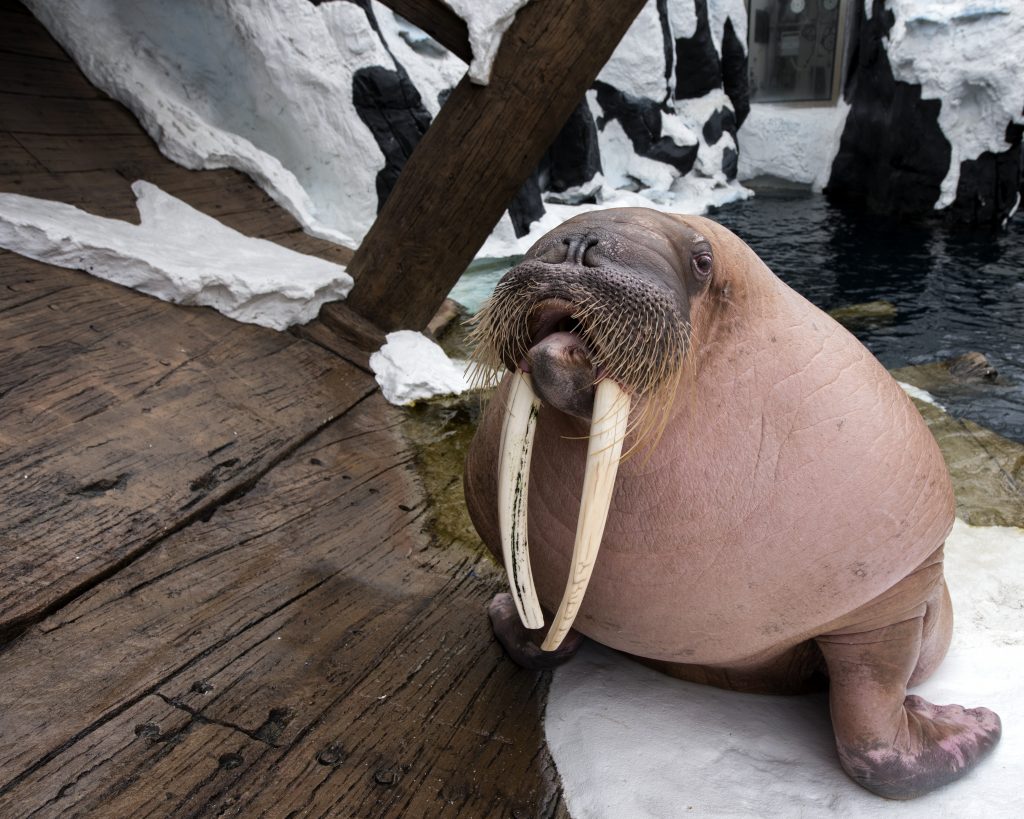
Most people believe that Santa is the leader of the North Pole, but that title actually goes to walruses! Walruses are often called the Kings of the Arctic because they can grow up to 12 ft. in length and weigh as much as 3,000 lbs. They are furnished with large tusks that are used for breaking through ice, getting out of the water, defending against polar bears, and asserting their dominance. Walruses survive in some of the coldest areas of Earth with amazing adaptations, including 4 inch-thick blubber.
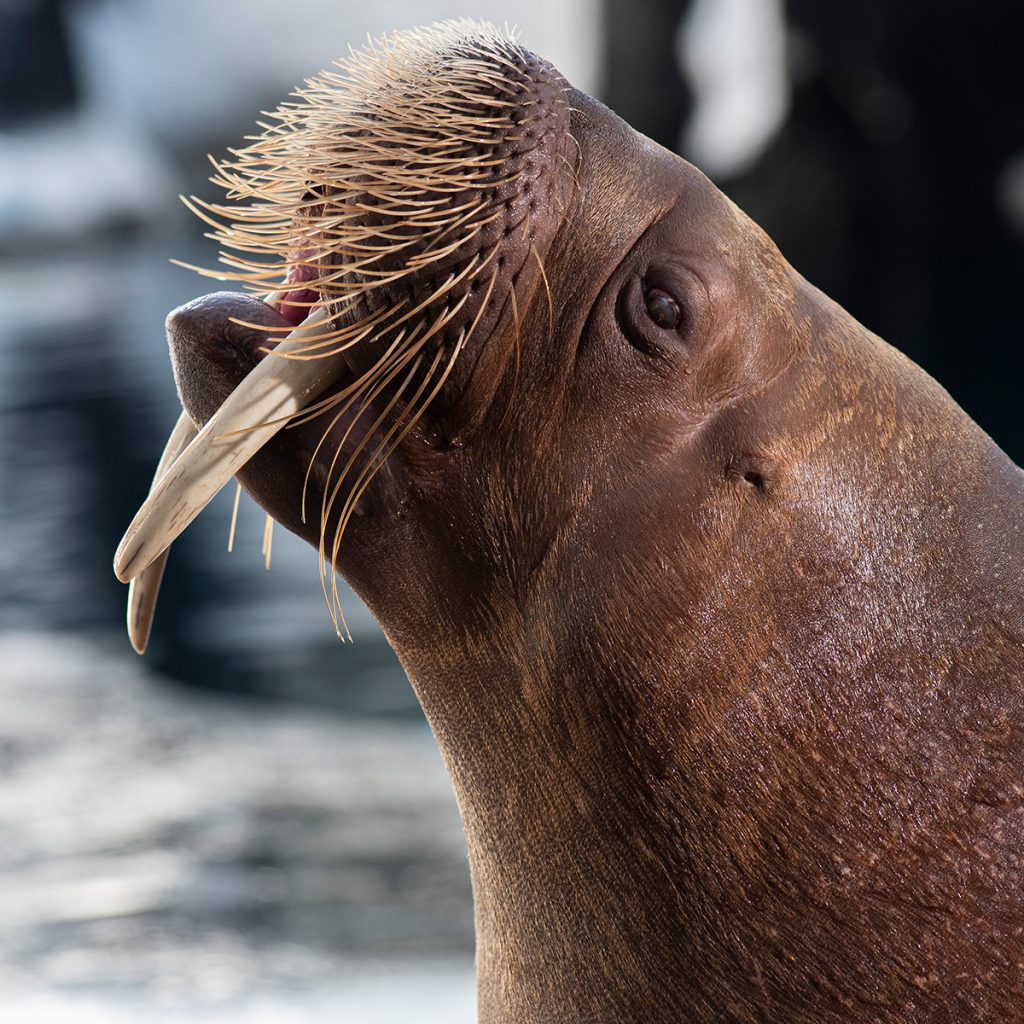
Walruses are members of the pinniped family, which means that they are the massive relatives of seals and sea lions. These blubbery mammals are found throughout the North Pole in large huddles, some of which can reach tens of thousands in number. Walruses mainly feed on mollusks by using super-sensitive vibrissae (whiskers) on their face to locate prey in murky waters. While they are traditionally thought of as land animals, they rely on sea ice to rest in between dives for food. They also use floating ice as a way to migrate and a place to molt, mate, give birth, and care for their young.
Walruses are listed by the IUCN as a vulnerable species: this means that they face a high risk of extinction in the wild. Researchers estimate the population of walruses to be around 250,000 individuals, but reliable counts of wild walrus populations have been hard to obtain. The greatest threat to modern walrus populations is habitat destruction, especially the melting of sea ice. As global temperatures rise due to climate change, ice at the Earth’s poles is quickly disappearing. With November 2020 labeled as the warmest November on record, walruses’ natural habitats are increasingly at risk.
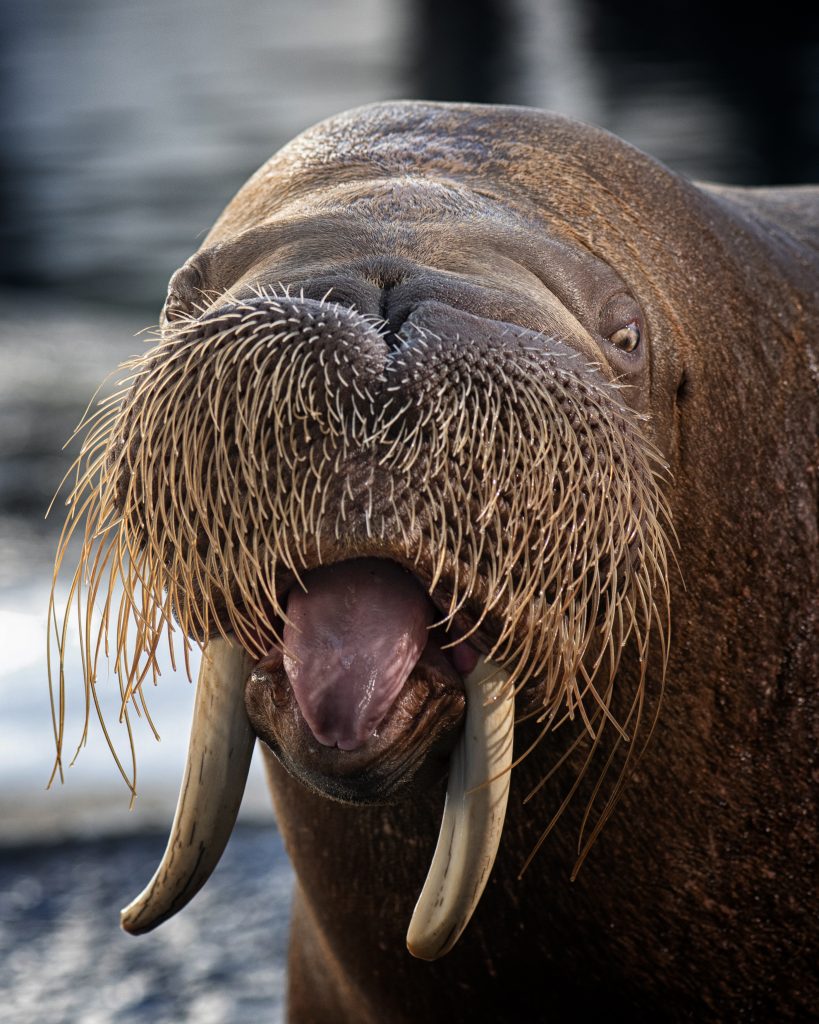
SeaWorld San Diego is home to more than one-third of the 14 walruses found in North American accredited zoos and aquariums. “There are five walruses in our care – one male and four females: Dozer, Uquq, Kulu, Chou Chou, and Basilla.” said Mitzi Synnott, Supervisor of Animal Training at SeaWorld’s Wild Arctic and Sea Otter facility. “Dozer – the male walrus – weighs the most at 3,650 lbs.” Walruses have distinct personalities and display remarkable intelligence. SeaWorld’s huddle of walruses gives park visitors the ability to interact with and learn about these marvelous animals. They also help educate the public about how human activities may impact their survival.
In addition to serving as ambassadors for their species, walruses in accredited zoos and aquariums aid conservation efforts by participating in research studies. SeaWorld San Diego is collaborating with researchers from UC Santa Cruz, Oregon State University, and other partners to generate data that would be impossible to collect in the wild. One ongoing study examines walrus’ sensitivity to the noise produced by ships, planes, helicopters, and drones. This noise is dangerous to walruses because the animals are not used to human-generated sounds. “Unfamiliar noises can startle the herd which can cause a stampede that can injure or kill the smaller animals,” said Synnott. Their study hopes to determine the hearing threshold for walruses, which is important for conservationists as sea ice continues to melt and walruses begin congregating in new – often populated – areas ashore.
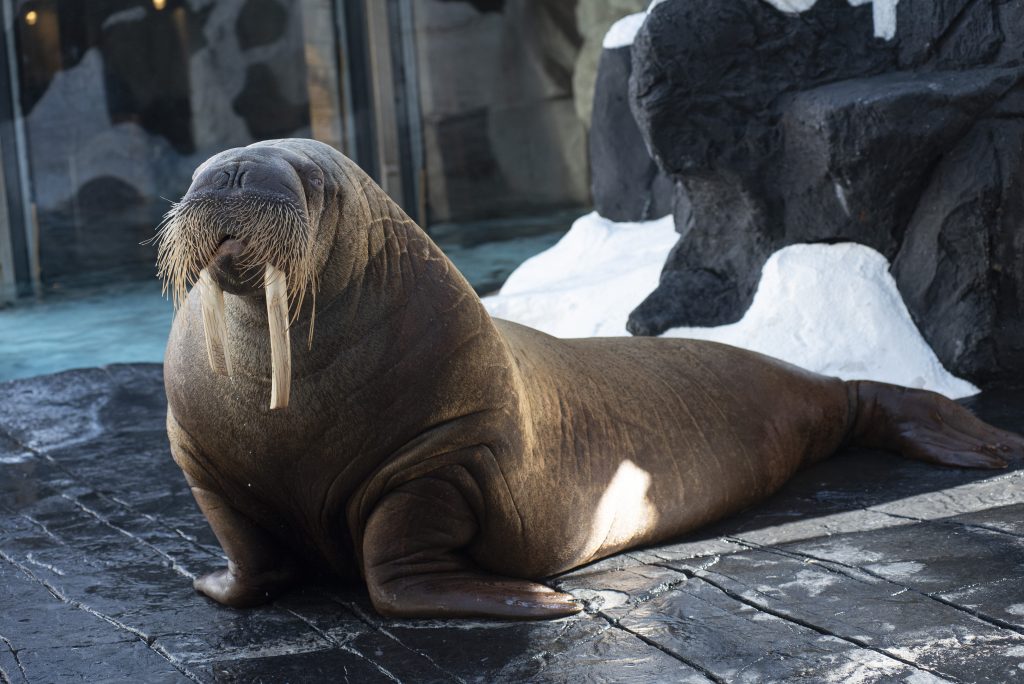
Another research study is looking at walrus vibrissae to measure the health of walruses. The growth of the whiskers is used to estimate the growth rate of the animal. “Examining the growth rate of the vibrissae or whiskers can yield information about the health, toxicology, reproductive events, and measure the hormone levels in an individual walrus,” Synnott explained. Measuring vibrissae growth involves making a mark on one whisker, then seeing how far it grows over the course of weeks and months. Researchers hope to use this technique in the wild after baseline data is collected at SeaWorld.
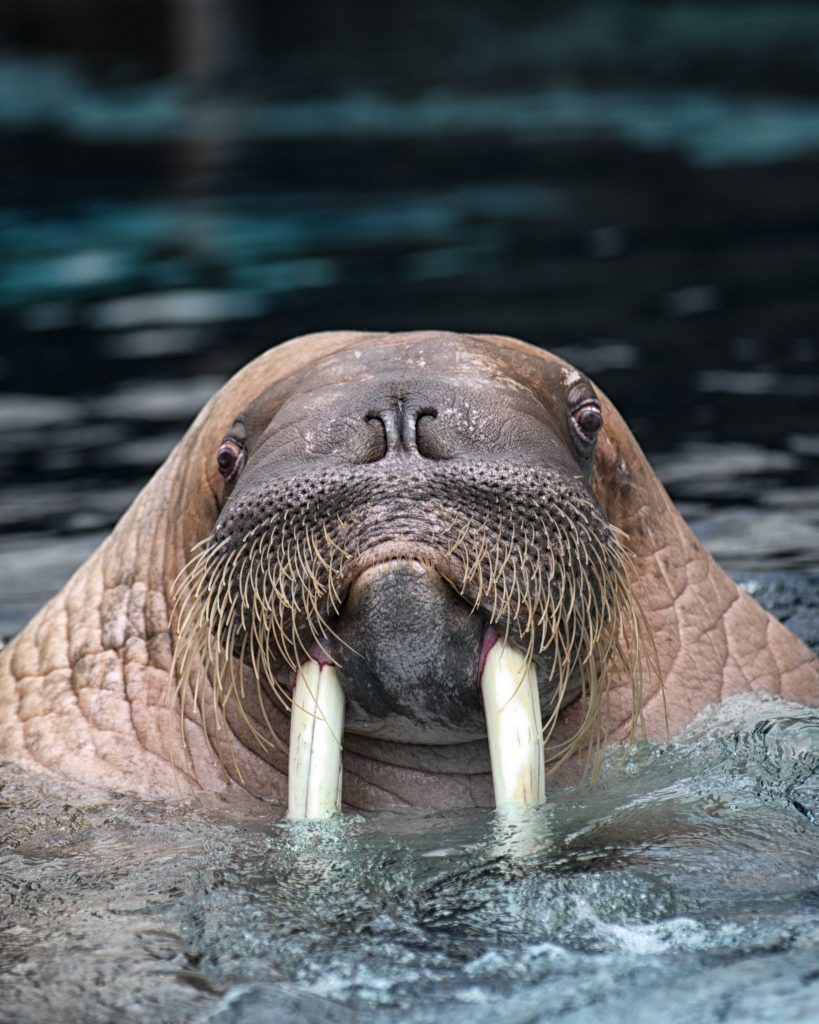
Studies like these require the monitored environments that zoos provide. Researchers need to know exactly how much an animal weighs, how much food they eat, and which hormones are active, which is nearly impossible to measure in wild populations. Synnot believes that these studies are vital for the conservation and protection of wild walruses, and are also fun activities for the walruses in SeaWorld’s care: “Being able to perform research with the animals in our care is extremely important because it directly impacts how we help to conserve their counterparts in the wild. Participating in these research projects is also beneficial for the animals, as it exercises their mind and helps build relationships with the veterinarians and animal care specialists that care for them.”
December 6-12 is Walrus Awareness Week! For more information about walrus habitat, diet, and physical characteristics, visit SeaWorld’s animal information site here. SeaWorld San Diego is currently closed to the public in accordance with the Regional Stay at Home order issued by the State of California, but reopening information can be found at the SeaWorld San Diego website here. SeaWorld Orlando and SeaWorld San Antonio are open to the public – click here for SeaWorld Orlando’s website and here for SeaWorld San Antonio’s website.
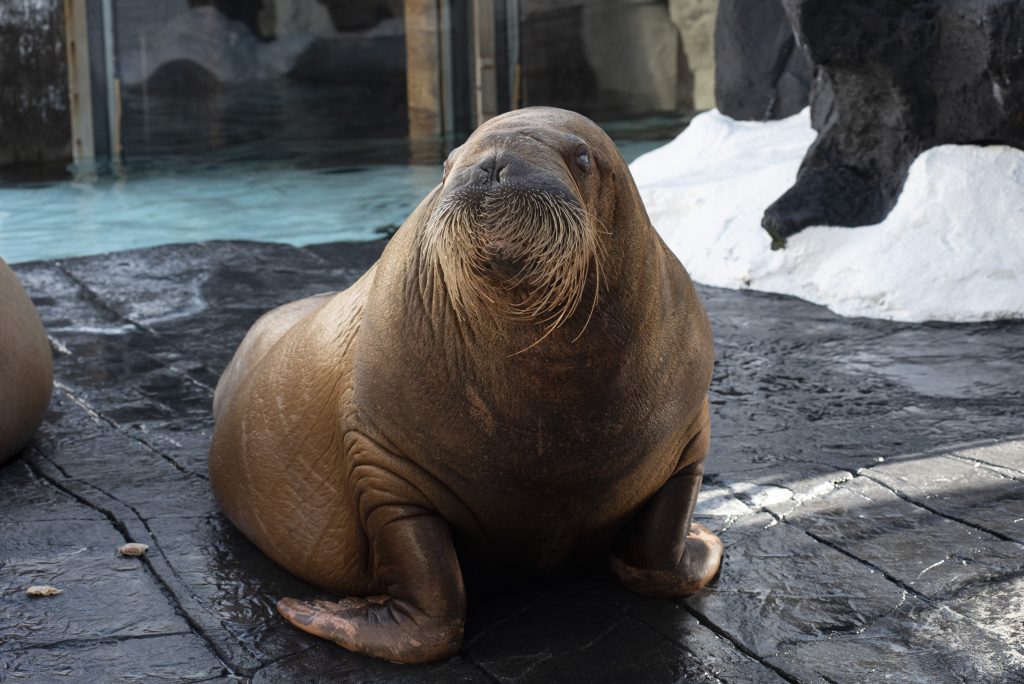
All photos courtesy SeaWorld San Diego.
Stay tuned for more from SeaWorld, and be sure to get social with us on Facebook and follow along with us on Twitter @BehindThrills for the latest updates!
For our latest theme park videos please be sure to subscribe to us on YouTube!

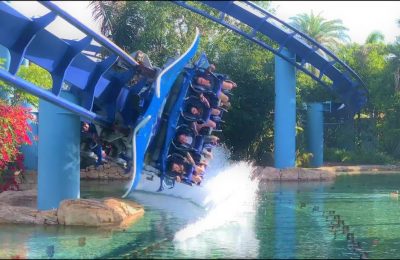

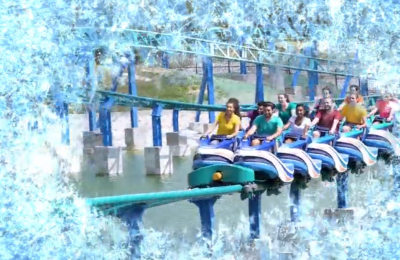





 Concerts, Food,
Concerts, Food, 









 #velocicoa
#velocicoa


 #kingsdominion #i305
#kingsdominion #i305 




 on top of the world
on top of the world